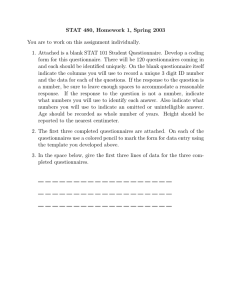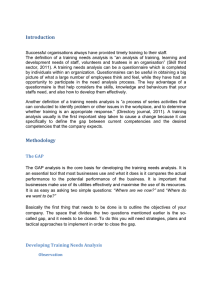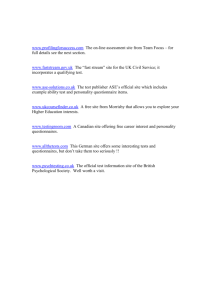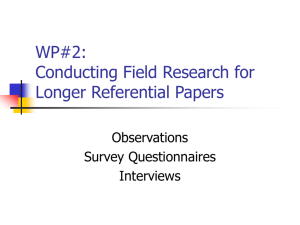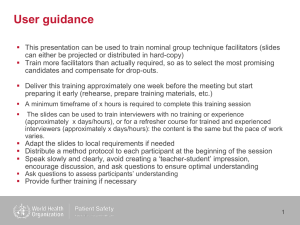How to Design Effective Questionnaires
advertisement
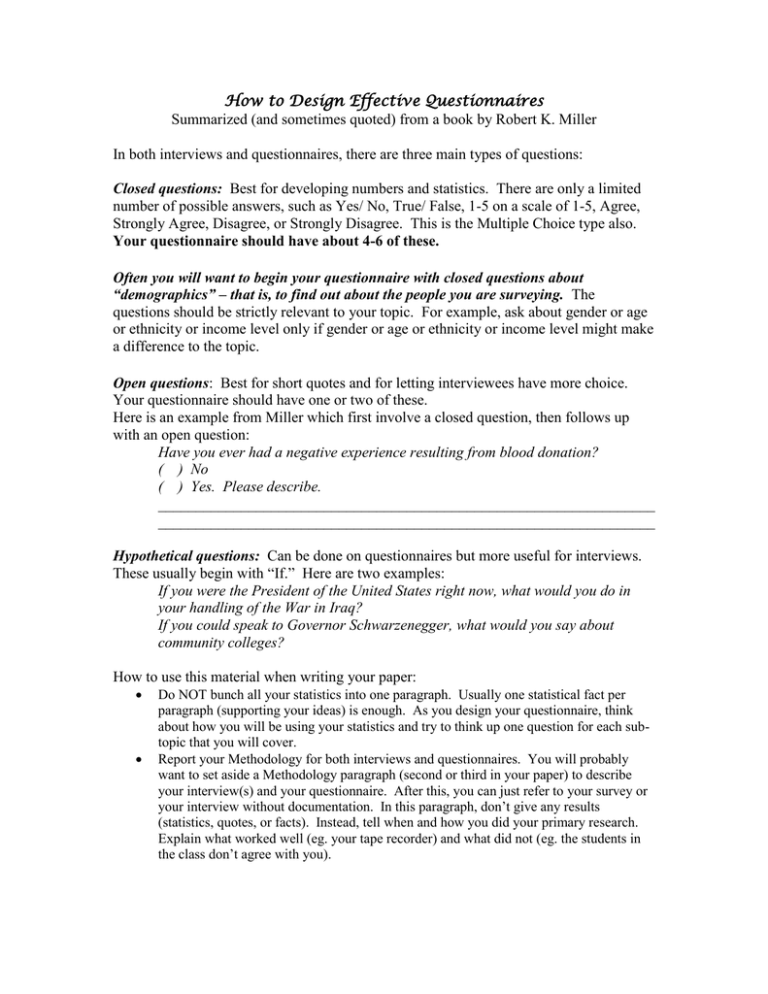
How to Design Effective Questionnaires Summarized (and sometimes quoted) from a book by Robert K. Miller In both interviews and questionnaires, there are three main types of questions: Closed questions: Best for developing numbers and statistics. There are only a limited number of possible answers, such as Yes/ No, True/ False, 1-5 on a scale of 1-5, Agree, Strongly Agree, Disagree, or Strongly Disagree. This is the Multiple Choice type also. Your questionnaire should have about 4-6 of these. Often you will want to begin your questionnaire with closed questions about “demographics” – that is, to find out about the people you are surveying. The questions should be strictly relevant to your topic. For example, ask about gender or age or ethnicity or income level only if gender or age or ethnicity or income level might make a difference to the topic. Open questions: Best for short quotes and for letting interviewees have more choice. Your questionnaire should have one or two of these. Here is an example from Miller which first involve a closed question, then follows up with an open question: Have you ever had a negative experience resulting from blood donation? ( ) No ( ) Yes. Please describe. __________________________________________________________________ __________________________________________________________________ Hypothetical questions: Can be done on questionnaires but more useful for interviews. These usually begin with “If.” Here are two examples: If you were the President of the United States right now, what would you do in your handling of the War in Iraq? If you could speak to Governor Schwarzenegger, what would you say about community colleges? How to use this material when writing your paper: Do NOT bunch all your statistics into one paragraph. Usually one statistical fact per paragraph (supporting your ideas) is enough. As you design your questionnaire, think about how you will be using your statistics and try to think up one question for each subtopic that you will cover. Report your Methodology for both interviews and questionnaires. You will probably want to set aside a Methodology paragraph (second or third in your paper) to describe your interview(s) and your questionnaire. After this, you can just refer to your survey or your interview without documentation. In this paragraph, don’t give any results (statistics, quotes, or facts). Instead, tell when and how you did your primary research. Explain what worked well (eg. your tape recorder) and what did not (eg. the students in the class don’t agree with you).
